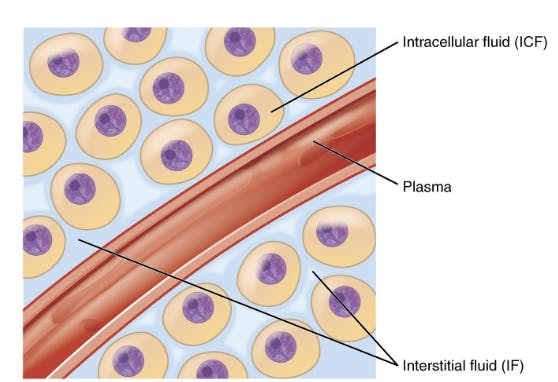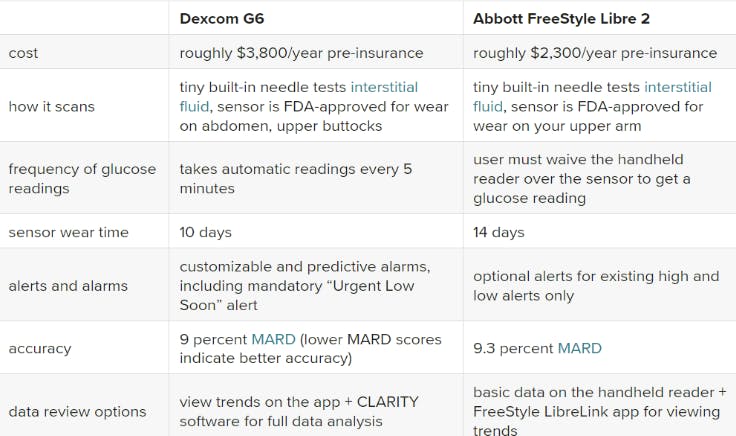TL;DR Innovations: Diabetes and Modern Technology
By Srishti Swaminathan
March 17, 2023 · 3 minute read
Medicine
Biology
Chemistry
Let’s face it: diabetes is overwhelming. From having to keep up with sugar levels to being meticulous about food choices for the sake of good health, managing the condition can be extremely difficult. However, technology has come a long way over the past few years, and recent tracking methods have become much more feasible and convenient. Let’s take a look at a major development in diabetes research and explore its potential to change lives in the future.
Tracking Diabetes Normally
To understand recent advancements, it is important to learn about how diabetes is usually tracked and what pitfalls these methods have; this will allow us to see how certain flaws have built the foundations for new and improved devices, an integral step of the scientific method!
Diabetics have to measure their blood sugar multiple times a day; the frequency depends on a variety of factors, including whether they have Type 1 or Type 2 diabetes. Blood sugar, or glucose, is measured by pricking the finger and putting the blood on a test strip that will be used inside a “glucometer.” Glucometers give fairly accurate blood sugar readings that help with daily decision making, but it is easy to see where it falters. For diabetics, pricking a finger multiple times a day to draw blood is not ideal, and the idea of inflicting pain on purpose can steer many away from checking their blood sugar regularly, increasing the risk for hyperglycemia (high blood sugar).
Continuous Glucose Monitoring (CGM)
A more painless and effective way of tracking glucose levels is continuous glucose monitoring (CGM). By eliminating the need to take blood multiple times a day, many diabetics opt for this method to keep up with their health. CGM works through a small sensor that can be applied on the back of the upper arm or on the stomach and worn continuously. This sensor gathers information about glucose levels every few minutes and sends the data to a mobile app, for example, for ease of access.
But why did I make sure to use the word glucose instead of blood sugar, even though they are essentially the same thing?
There is one main difference between traditional glucometers and CGM: the former use blood while the latter uses interstitial fluids (ISF). Interstitial fluids are simply the fluids around cells under the skin; these fluids contain biomarkers that help with continuous monitoring. They are much more accessible than blood, which is why CGM sensors are almost painless to apply; the sensor does not have to go that far down into the skin.

Even with all of these benefits, there is one issue: glucose enters the bloodstream before the interstitial fluids, meaning that ISF glucose readings are a bit too high or a bit too low at any given moment. The video at the end of this article explains this concept further. Some devices have found ways to mitigate this “lag” of sorts by creating patterns with collected data to allow users to make the most informed decisions possible.
CGM Devices

One of these devices is the Freestyle Libre, a CGM sensor that works exactly as described above but uses a reader to actually obtain the reading. It is pictured on the right and goes onto the upper arm. Another popular option is the Dexcom G6 sensor (left). Here is an in-depth comparison of the two competitors for context:

TL;DR
Though living with diabetes and the responsibility of tracking blood sugar can be painstaking (literally), many modern developments such as CGM and ISF methods have revolutionized the way diabetics measure glucose levels. The Dexcom G6 and Freestyle Libre sensors are excellent devices on the market; though they are a bit expensive, they both show great potential for future discovery in this field.
Here is a great video about the difference between glucose readings from ISF and blood if you want to learn more!
Sources:
https://www.ncbi.nlm.nih.gov/pmc/articles/PMC4322747
https://www.freestyle.abbott/us-en/products/freestyle-14-day.html
https://www.ncbi.nlm.nih.gov/pmc/articles/PMC7871333/
Image Sources:
https://textimgs.s3.amazonaws.com/osanp/m46411/2702_Fluid_Compartments_ICF_ECF.jpg
Did you enjoy this article?
About The Author
Srishti Swaminathan is a high school sophomore interested in STEM and writing. She enjoys reading, listening to music, and watching movies. If you have any comments or questions regarding this article, feel free to contact her at srishti@sciteens.org.